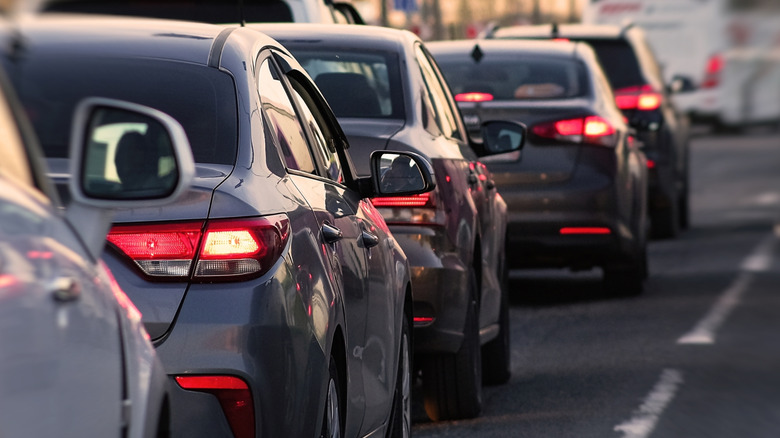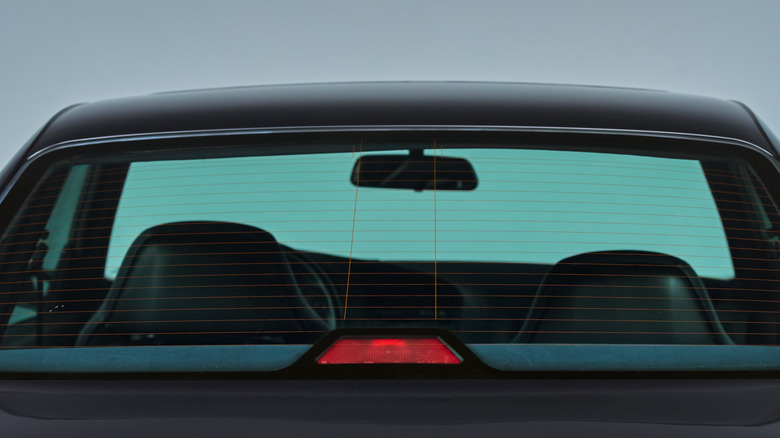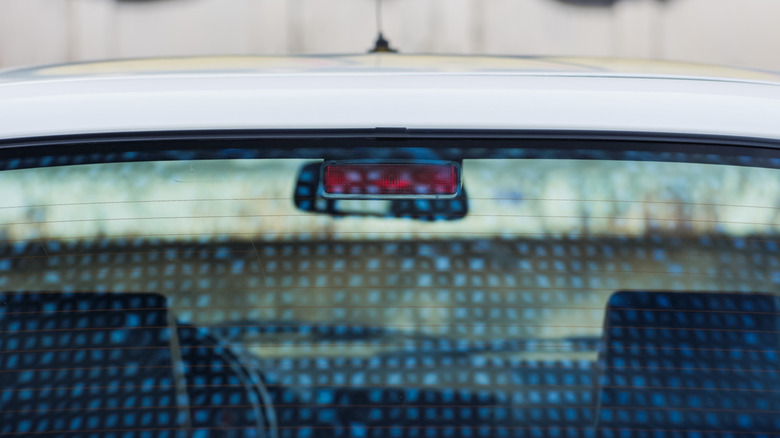Yes, You Do Have To Get Your Burned-Out Third Brake Light Fixed ASAP – Here's Why
You might think a burned-out third brake light is no big deal. After all, you've got two other brake lights. However, the reality is far different. Failing to fix the Center High‑Mounted Stop Lamp (CHMSL), the more official name, can lead to a traffic ticket, a failed inspection, or possibly an accident.
The third brake light is so critical because it reduces the risk of rear-end collisions. The CHMSL became mandatory for passenger cars in the U.S. beginning with the 1986 model year. Light trucks came under this federal requirement in 1994. A 1998 report from the National Highway Traffic Safety Administration (NHTSA) backed up the value of the CHMSL, showing that from 1989 to 1995, rear impacts were reduced by 4.3%. Those results may seem modest, but NHTSA estimated this translated into as many as 137,000 fewer police-reported crashes and a reduction of up to 55,000 injuries annually. Unfortunately, having a working third brake light won't save you from all accidents; that's why it's a good idea to know the critical questions to ask after a car accident.
In fact, according to the National Safety Council, almost 30% (almost 3.8 million) of motor vehicle collisions in 2023 involved a rear impact. The NHTSA study describes the CHMSL as "red stop lamps mounted on the center line of the rear of a vehicle, generally higher than the stop lamps on the sides of that vehicle." The light is only activated when the brake pedal is pressed. When paired with the other brake lights, this feature creates a triangle of visibility designed to reduce reaction time when the driver in front is braking. Simply put, because the CHMSL is higher and centered, it's where drivers naturally look, so they notice it faster.
The consequences of not fixing a malfunctioning third brake light
Federal Motor Vehicle Safety Standard (FMVSS) No. 108 makes the CHMSL mandatory equipment. Each state enforces this and other requirements through an inspection process, automotive safety laws, or both. However, not all states require regular car inspections. New York has the CHMSL mandate on its books for 1987 model year and newer cars. This law requires the third brake light to be on the vehicle's vertical centerline (the same distance from the left and right sides) and fully functional. Texas goes further, stipulating that the CHMSL cannot be obscured, tinted, or under-illuminated.
Virginia is less specific in its regulations, but still requires the third brake light to meet the "standards adopted by the United States Department of Transportation." However, Virginia law states that the police can't stop a motor vehicle for violating this standard. Yet, a non-working or non-conforming CHMSL can still result in a safety inspection denial in that jurisdiction. In short, driving with a malfunctioning or non-compliant third brake light creates potential legal or regulatory hassles, which opens the door to a traffic citation or failing inspection. Depending on where you live, you could get hit with both consequences.
How to replace a third brake light (and when not to DIY)
Although federal regulations require automakers to "provide access for convenient replacement of the bulbs without special tools," whether you can replace them yourself depends on the vehicle. The unit may be embedded in a trunk lid, mounted behind the rear window, or integrated into a rear spoiler. At a minimum, you'll need a screwdriver to open the housing, but a trim tool may be required to pry the CHMSL casing loose without damaging the unit or surrounding surfaces. For a bulb-type CHMSL, remove the bad bulb and install a correct replacement. You might want to test the new bulb before reassembling the housing. Keep in mind that tail lights and brake lights are not the same thing, so it's important to know the difference before buying or replacing a bulb.
Newer vehicles often use a CHMSL with an integrated LED module, which has greater longevity than standard incandescent bulbs. However, these units may not be user-serviceable, requiring a trip to the mechanic. For example, the owner's manual for the 2022 Toyota RAV4 says that replacing the third brake light should be done by a Toyota dealer. Always check the owner's manual for model-specific steps, part numbers, and other requirements for replacing the CHMSL.


